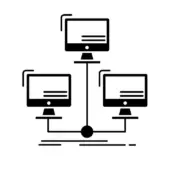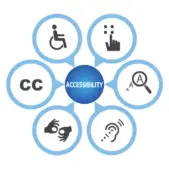Mobile technology has become deeply embedded in how people live, shop, work, and manage their health. What began as a consumer convenience has transformed into a business imperative. Today, mobile applications are not only driving revenue; they are reshaping industries.
As businesses, designers, and developers look to the future, several key mobile trends are setting the pace for innovation.

Wearables Are Part of Everyday Life
Wearable technology is no longer emerging—it’s expected. Smartwatches, fitness bands, and health trackers are widespread, and their applications have matured beyond step counting. In healthcare, wearables monitor chronic conditions, detect early signs of illness, and integrate with virtual care platforms. In transportation, wearables provide contactless payment and real-time transit alerts.
For developers, the challenge is designing seamless, hyper-personalized experiences that run on smaller screens while tapping into sensor-rich environments. Minimal interactions, voice control, and glanceable interfaces are essential to making wearables not just functional but indispensable.
Enterprise Mobile is Strategic, Not Optional
Mobile applications have moved from nice-to-have to core infrastructure within the enterprise. They power field operations, streamline inventory tracking, facilitate remote collaboration, and support real-time decision-making across departments. What’s changed is the sophistication of these tools. Organizations are now building mobile ecosystems with secure integrations into CRMs, ERPs, and AI-powered dashboards. Enterprise mobility solutions are also being customized for frontline teams, giving them the same digital access and efficiency as back-office staff.
Workforce Mobility and the Role of BYOD
Mobile-first work environments are now standard. With flexible work arrangements and distributed teams, employees expect to access internal tools from anywhere, on any device.
Bring Your Own Device (BYOD) is supported through zero-trust security models, biometric authentication, and mobile device management platforms. The focus has shifted from controlling access to enabling secure, productive experiences regardless of device or location.
Simplified UX, Smarter Interfaces
As devices and contexts multiply, phones, tablets, foldables, wearables, voice assistants, simplicity is essential. Users expect fast, intuitive experiences, whether they’re completing a task on the go or managing a complex workflow.
Modern mobile UX design prioritizes clarity, speed, and personalization. AI-driven interfaces anticipate user needs, reduce friction, and adapt based on behavior. For wearable and compact devices, micro-interactions and voice commands are replacing traditional taps and swipes.
Security is Baked into the Process
Security is no longer a bolt-on concern; it’s a foundational part of mobile application development. With increasing threats targeting mobile endpoints, organizations are embedding security into every stage of the app lifecycle.
Key practices include:
- Code obfuscation and anti-tamper techniques
- End-to-end encryption for data in transit and at rest
- Regular penetration testing and runtime threat detection
- Compliance with global data privacy standards
Security isn’t just about defense; it’s about building trust and maintaining operational continuity.
Bandwidth, Edge Computing, and Real-Time Sync
The mobile experience now relies on more than device speed. Applications must deliver real-time performance, low-latency interactions, and constant uptime. With growing use of edge computing, content and services are processed closer to the user, reducing delays and enabling smarter offline support.
In addition, mobile apps are expected to sync across platforms instantly. Users can start an action on one device and complete it on another, with no disruption. This level of continuity is becoming table stakes.
What This Means for Teams and Leaders
Mobile strategy is now enterprise strategy. Whether you’re designing for consumers, field teams, or executives, the goal is the same: deliver value through context-aware, responsive, and secure applications.
Investing in scalable mobile infrastructure, embracing low-code platforms, and adopting AI-driven personalization will define the next generation of digital experiences. Businesses that lead with mobile will not only meet expectations; they’ll shape them. Let’s talk.


